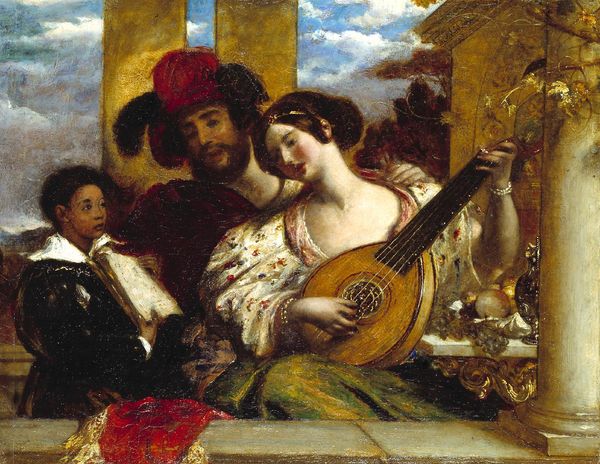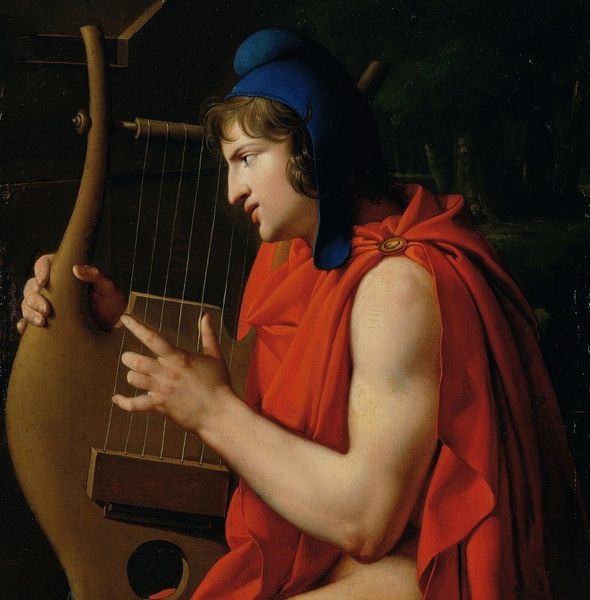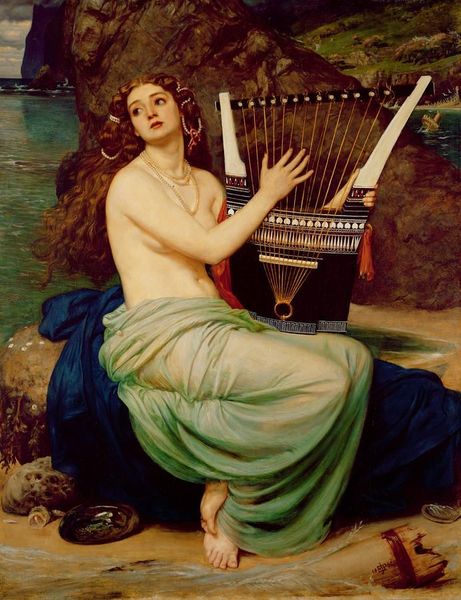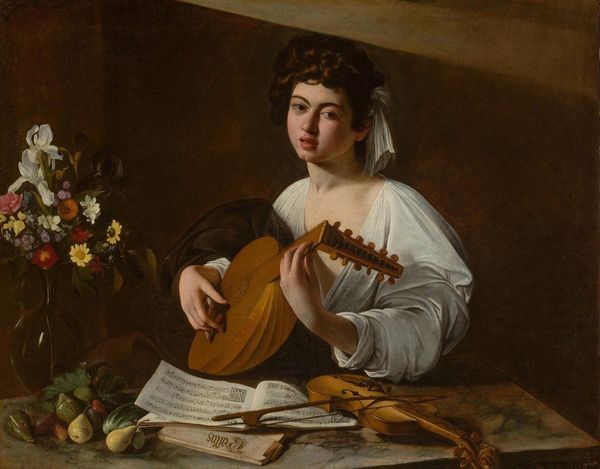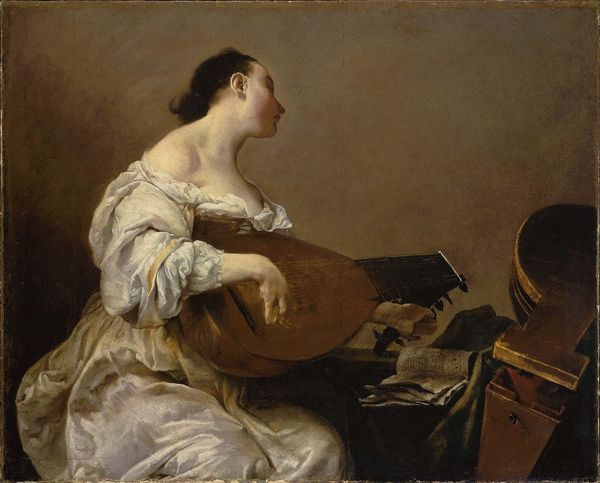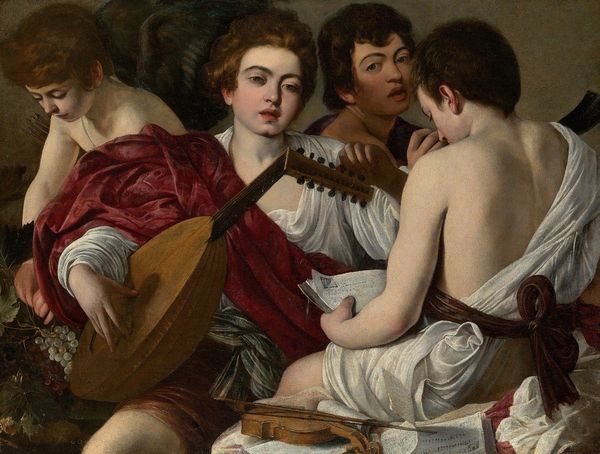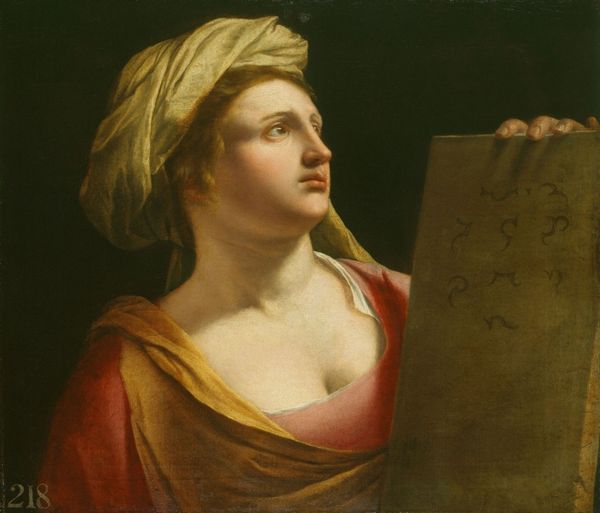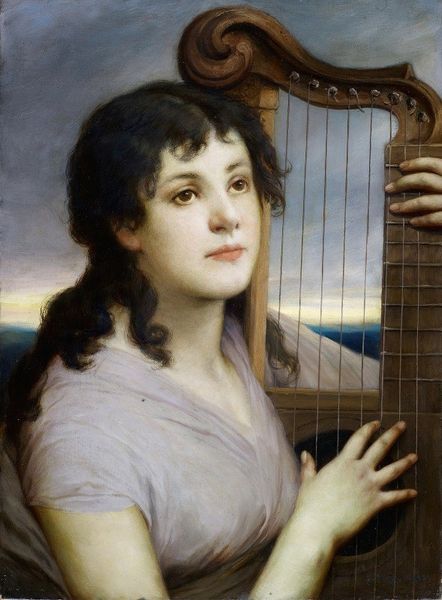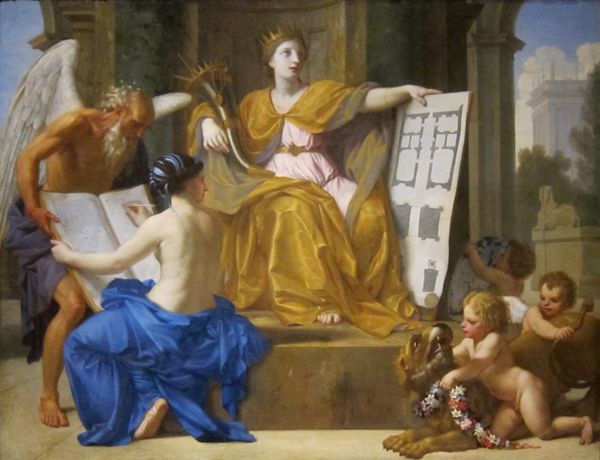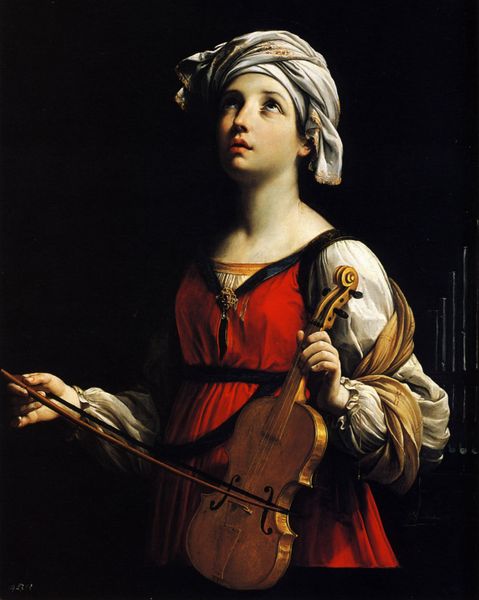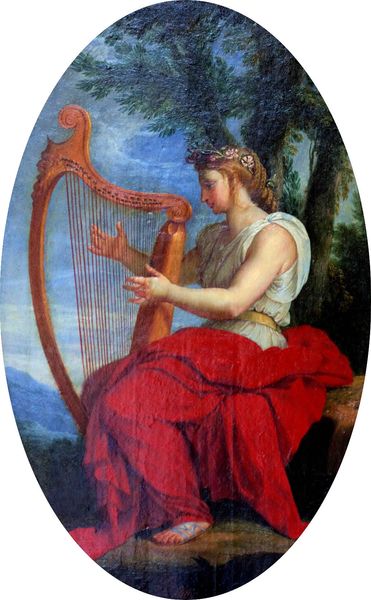
painting, oil-paint
#
portrait
#
allegory
#
baroque
#
painting
#
oil-paint
#
genre-painting
#
academic-art
Dimensions: 41 5/8 x 56 3/4 in. (105.7 x 144.1 cm)
Copyright: Public Domain
Curator: Let’s consider this work, Laurent de La Hyre’s “Allegory of Music,” from 1649, which is oil on canvas. Editor: This painting has such a serene quality to it. The way the light catches on the lute's wood and the woman's dress is just beautiful. It feels very controlled and composed. What catches your eye when you look at this piece? Curator: The first thing I consider is the materials. The lute, the organ pipes, even the paper – all painstakingly made. Where did de la Hyre source his pigments? How were they ground? These objects, including the painting itself, are products of immense labor. Each component reveals a history of skill and the social relations involved in its production. Editor: That's a really interesting way to look at it. I hadn't considered the sourcing of the pigments, or the process of creating these instruments. Curator: Absolutely. How does that shift your view of the "serene quality" you mentioned? Does it become more charged, knowing the materials aren't simply "there," but results of human extraction, skill, and maybe even exploitation? And how does this knowledge then reflect upon the figure's own skill? What kind of social and economic resources did it take for her to be a "master" of an instrument in this time? Editor: It definitely makes me see it differently. The "serenity" now has a kind of… tension underlying it, a recognition of the work involved. Also, a question comes to mind regarding accessibility of instruments for all during that era versus now. Curator: Exactly! That tension is key. We’re forced to confront not just beauty, but the conditions that enabled that beauty to come into existence. And who benefited from its existence? What materials can convey similar ideas today? Editor: I learned that by seeing an artwork and thinking of its cultural and historical context in terms of labour, accessibility, and the resources involved can change our viewing experience a lot. Curator: I'm glad it resonated! Looking at art through the lens of materiality allows us to connect with history in a more grounded, tangible way.
Comments
No comments
Be the first to comment and join the conversation on the ultimate creative platform.


